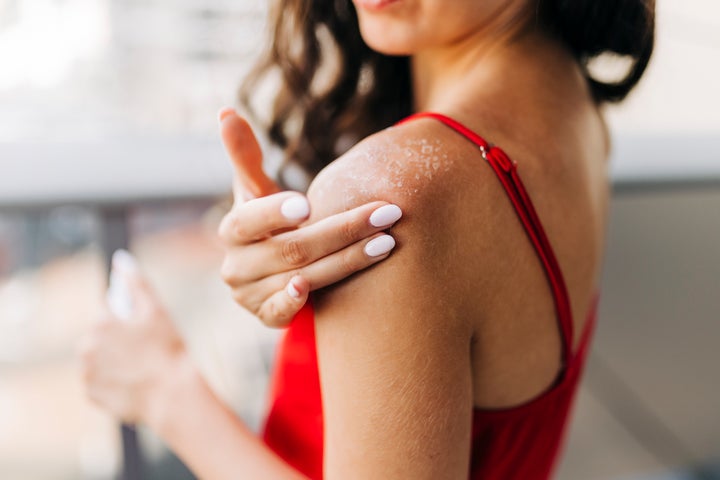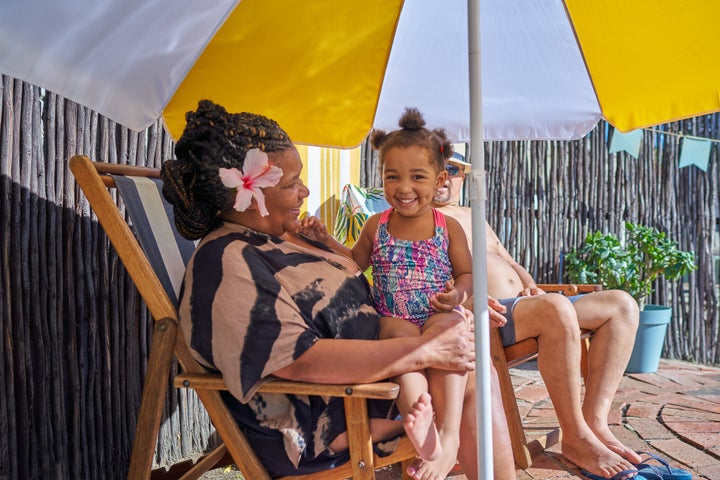
When spending time outside, it’s important to do what you can to avoid getting a sunburn. The skin damage that occurs can cause problems like skin aging and skin cancer.
No amount of sunburn is good, according to Dr. Ida Orengo, the chair of dermatology at Baylor College of Medicine in Texas. Many people “think that it’s OK to get a sunburn at the beginning of the season because it will make your skin stronger to avoid further sun damage or further burns and that’s really not the truth,” Orengo said.
Sun damage is serious — even if it doesn’t seem like it in the moment. As you age, you could face health problems, like skin cancer, as a result of tanning and sunburns.
The American Academy of Dermatology Association reports that 1 in 5 people in the United States will have skin cancer in their lifetime. And, according to the U.S. Department of Health and Human Services, skin cancer is the most common cancer in the country.
In other words, it’s important that you protect yourself from too much ultraviolet exposure throughout the year, and especially in the summer when you’re more likely to spend time outside.
But while sunburns can and should be avoided, sunburns do mistakenly happen from time to time. If you find yourself with a sunburn this summer, here’s what dermatologists say you can do to treat it:
1. Take a cool shower.
According to Orengo, frequent cool showers are a good way to help with the pain that accompanies a sunburn. They also help decrease the inflammation and reduce swelling and any blisters.
“You don’t want to take a hot shower because that is just going to make it worse,” she added.
She said using mild soap, or no soap at all, is ideal. And when you get out of the shower, Orengo said, you should pat yourself dry — don’t harshly rub a towel over your skin and sunburn.
2. Take some anti-inflammatory medicine.
Since sunburn causes inflammation of the skin, you can use medicine to help reduce that, according to Dr. Leah Jacob, an assistant professor in the department of dermatology at Tulane University School of Medicine in New Orleans.
“I usually recommend people can take either ibuprofen or Tylenol if you’re not allergic to either of those,” she said. These medicines will help with the inflammation, along with any pain.
3. Use a gentle moisturiser.
Both Jacob and Orengo said a mild moisturiser like Aquaphor or petroleum jelly is great for sunburns, too. “Just a bland emollient that will help repair the skin barrier,” Jacob emphasised.
When you use a lotion that has additives, you run the risk of further irritation. “You don’t want to get a moisturiser that’s got acid in it to help get rid of dry skin,” Orengo said.
Aloe can be helpful, as long as it’s an aloe gel that isn’t combined with lots of other ingredients like benzocaine. “I recommend aloe vera for most patients as well. They usually can tolerate that pretty well,” Orengo said.

4. Try a cold compress.
According to Jacob, cold compresses can feel soothing to irritated, sunburned skin.
To do this, simply put a wet, cool towel on your sunburn. Or, for an even colder compress, Jacob said you can put that wet towel in the refrigerator for a short time before applying it to your skin.
5. Drink H2O.
There’s a reason you’re thirsty when you’re sunburned. “One of the things the skin helps is to retain water,” Orengo explained. And when you’re sunburned, your skin is not intact so you lose some fluid. To combat this, make sure you stay hydrated by drinking plenty of water.
Take steps in the future to avoid getting a sunburn.
Orengo said many people end up getting burned on overcast days because they think the sun is weak. This is especially true for people who are more prone to sunburn, including people with fair, freckly skin, she noted.
To protect yourself from getting burned, you need to apply sunscreen 30 minutes before heading outside and reapply every two hours, Orengo said.
“Technically, you need to have a teaspoon of sunscreen for the face and about a shot glass of sunscreen for the body,” she added, noting that you want your sunscreen to have an SPF of at least 30.
Also, pay attention to the time when you’re outside. Jacob noted that you should avoid being in the sun when it’s at its strongest, which is from 10 a.m. to 2 p.m. And when you are outdoors, Jacob said to wear protective clothing like hats, long-sleeved shirts and clothing with UPF, or ultraviolet protection factor, which provides a level of additional sun protection.
Orengo said you should also seek shade when the sun is at its strongest to help protect your skin from the sun’s rays.
While one sunburn may not seem like a big deal, Orengo said it shouldn’t be something you dismiss. “You never want to get that damage ... avoid it at all costs because it all adds up over time,” she said.